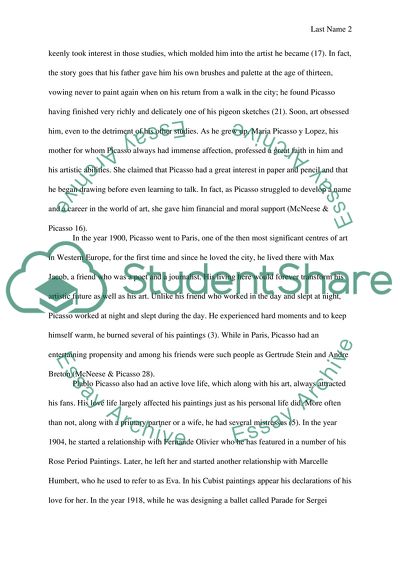Cite this document
(Pablo Ruiz Picasso Essay Example | Topics and Well Written Essays - 1500 words, n.d.)
Pablo Ruiz Picasso Essay Example | Topics and Well Written Essays - 1500 words. https://studentshare.org/biographies/1746111-an-artist-from-1800s-and-after
Pablo Ruiz Picasso Essay Example | Topics and Well Written Essays - 1500 words. https://studentshare.org/biographies/1746111-an-artist-from-1800s-and-after
(Pablo Ruiz Picasso Essay Example | Topics and Well Written Essays - 1500 Words)
Pablo Ruiz Picasso Essay Example | Topics and Well Written Essays - 1500 Words. https://studentshare.org/biographies/1746111-an-artist-from-1800s-and-after.
Pablo Ruiz Picasso Essay Example | Topics and Well Written Essays - 1500 Words. https://studentshare.org/biographies/1746111-an-artist-from-1800s-and-after.
“Pablo Ruiz Picasso Essay Example | Topics and Well Written Essays - 1500 Words”. https://studentshare.org/biographies/1746111-an-artist-from-1800s-and-after.


